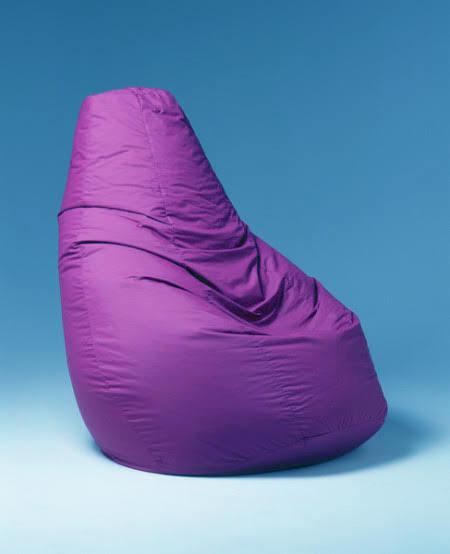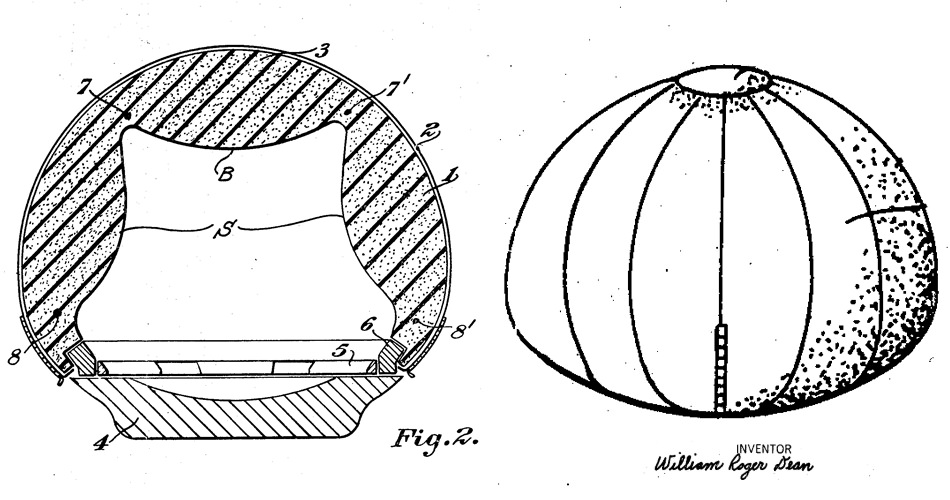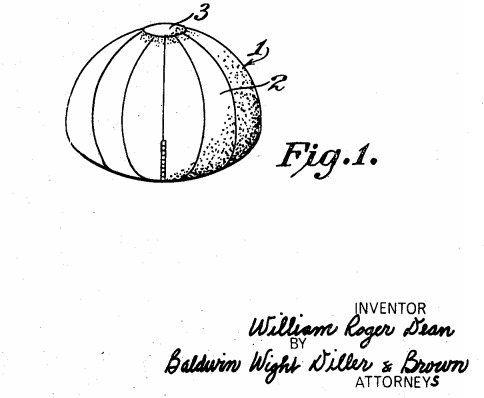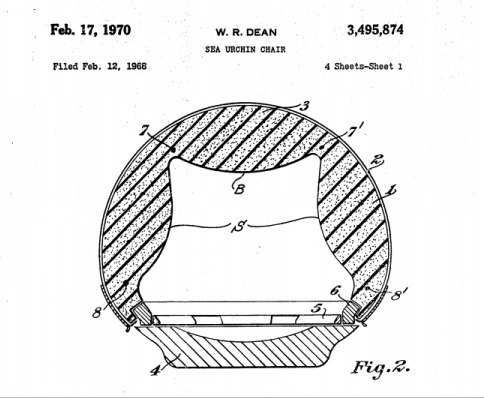Bean bags – what was once just seen as a hippie piece of furniture or a kiddie’s toy is now available in multiple sizes, shapes, fabrics and colours.
They can be found in schools, resorts, behind your office desk, at café’s, cinemas, the houses of celebrities, indoors or outdoors, on a boat or on the pool deck, and so much more.
So, how did the bean bag come so far from its humble beginnings and turn into such a historical icon?
Well, not only they have been a statement piece of furniture for the last 5 decades, but if you believe the historians, they have a long and interesting history prior to this, being used as a toy for games or even sports an ancient times.
Who would have thought the bean bag would have had such an interesting and even debatable history? Please, sit back and enjoy this article – it’s definitely worth the read.
The History of the Bean Bag – It’s a Mystery That’s Created a Controversy…
The history of the bean bag is such a mysterious and even controversial subject. This is all due to the fact that the bean bag is such a simple design, yet it can be used in multiple ways. If you are thinking about the bean bag in terms of furniture only, then you would say they only emerged on the scene fifty years ago. However, their history can actually be traced back to long before the 1960s – as a matter of fact, all the way back to more than four thousand years ago in ancient Egypt.
So, which side of the bean bag debate are you on? Well, if you believe that bean bags existed in ancient times, let us explore that topic a little further.
What Where Bean Bags Used for in Ancient History?
It doesn’t really matter who is truly right when it comes to the debatable subject regarding the history of bean bags – either way, it’s really fun, fascinating and highly educational topic as to which many people know little about.
For example, did you know that bean bags were used to help jugglers, that they helped to invent the games Cornhole and Hacky Sack, and were even used in sports such as tai chi? It really is incredible what a long and intriguing history bean bags have.

And you can read on to find out more about what bean bags have helped bring to the world today.
Bean Bags in Ancient Egypt
According to one historian, the first bean bags were said to have been invented by the ancient Egyptians around 2000 B.C.
The Egyptians would fill small pouches of leather with dried beans or pebbles, and for thousands of years, these round bags were used to play recreational activities. They were used by some of the world’s first jugglers to master their skills.
Did you know? Bean bags are still often used for juggling in modern day society.
Bean Bags & the Native Americans
Bean bags were also thought to be used by the Native Americans in the Great Plains of America. Several tribes would fill pig bladders with dried beans to pass time indulging in recreational activities. One such game was a precursor to the game known as “Cornhole”.
Did you know “Cornhole“, also known as the “Bean Bag Toss” game, is a game we still play today.
It is a lawn game where players take turns throwing bags at a raised board with a hole in the end. You can play with only two people, or you can form teams. Taking turns, you toss the bean bags at the board, trying to get them into the hole. A bag in the hole scores 3 points, whereas one that lands on the board scores 1 point. The first team to reach 21 points wins the game.
Bean Bags in Ancient China
Bean bags were used in ancient China to assist in teaching student’s tai chi – a form of martial arts that originated in the 12th century.
Tai chi integrates your mind with your body as it teaches you to control your movements and breathing, assists you to develop internal energy, mindfulness, and serenity. The main purpose of tai chi is cultivating your life energy (qi) so it flows smoothly and powerfully throughout your body.
At some point in time, the masters of tai chi began using small pouches filled with sand, pebbles or dry beans. They kept these bags in the air by striking them with various parts of their body, using the slow, graceful movements that helped them to focus on their inner power.
An old video in 1937 shows an expert at tai chi kicking bean bags, which can be seen here. This is thought to be the foundation for the game “Footbag” (also commonly referred to by its trademark “Hacky Sack”).
Did you know? We still play Footbag (which you may know by its trademark name “Hacky Sack”) today. This is a game that involves two or more players and a ball-shaped bean bag. The players stand in a circle and kick the bag in the air, trying to keep it off the ground for as long as possible.
The Evolution of Bean Bags as Furniture
With all the bean bags being used for recreational activities in the ancient times, it may surprise you to discover that the first bean bag chair was not actually invented until the 1960’s. Below are the people you have to thank for the invention of such a comfy piece of furniture and how it came to fruition.
“The Sea Urchin” A man named William Roger Dean (known as Roger Dean), who worked for the Royal College of Art, is an English artist, designer and publisher.
One of his first successes was the “Sea Urchin Chair”, which he completed in 1967, and filed a patent for it in 1968. It is considered a predecessor to the bean bag chair, as it did not actually contain beads – it was instead filled with blocks of foam as the cushioning material.
The chair is now a part of the permanent collection at the Victoria and Albert Museum in London.
According to the Patent, Roger Dean’s Sea Urchin Chair “resides in a chair in the form of a ball like or spheroidal structure formed of deform-able material having a resilience such that when it rests it is self-supporting but will deform under load”.
The Sea Urchin was referred to as a “petal shaped”, as illustrated in the drawings by Roger Dean below:
According to the Patent – FIGURE 1 is a perspective view of a chair device according to one embodiment of the invention and illustrating the arrangement of the dome and panel sections.
According to the Patent – FIGURE 2 is a vertical section of the chair of FIGURE 1 when at rest.
The Sacco
The earliest bean bag chair invented was called the “Sacco” – it is a pear-shaped leather chair, filled with Styrofoam beans, and it is still being manufactured today.
The Sacco was designed in 1967-1968 and released in 1969, the year after the Sea Urchin.
It was designed by three Italian architects, Cesare Paolini, Piero Gatti and Franco Teodoro, in conjunction with Zanotta Design, a company based in Italy. The designers were asked to create a chair that was unique yet aesthetically pleasing, easy to maintain and comfortable.
They were manufacturing the chair during an era known as the “Italian Modernism movement”, which occurred after World War II and was characterised by the use of new technologies, materials, and manufacturing processes, and as such they were able to use new materials such as polystyrene and other plastics, at prices that were affordable for consumers.
And so, the shapeless chair known as the Sacco was born.

Of the bean bag, in an interview in 1988 Piero Gatti said:
“Many of us were interested in designing objects which were as flexible as possible which could adapt to different situations …different physical structures. So we said think of a chair that will allow for these functions. We began to think about a material that would allow for this adaptability, both for the body and its positions: like snow, you throw yourself into it and make an imprint in the fresh snow, or a fluid like water”.
The target market for the Sacco was the hippies and non-conforming households, as the Sacco was meant to be a radical piece of ‘anti-design’ to criticise any conservative tastes, or a “non-chair” to combat conforming tastes.
Although it went against these design specifications in some ways – it was shapeless, but when full the shell had the shape of a pear, and it was not made of plastic, but rather from leather (this being a material that Italian designers took in their pride, and the Sacco was made to be proud of its Italian heritage).
Still though, it hit the target market for the hippies in America and Europe as the Sacco’s unique design placed users closer to the floor, allowing them to lounge around in casual positions, which suited the social and relaxed era and non-conforming identities.
It immediately became an overnight sensation, with the popular department store Macy’s ordering 10,000 pieces straight away. The Sacco remained a popular icon throughout the 1970’s.
The 1970’s – The Skyrocketing Popularity of the Bean Bag
In the 1970’s, bean bags were mass marketed and reached the height of their popularity. They were being produced by a large number of factories worldwide and being sold in department stores all over the world.
You could almost guarantee that you could walk into any household in any First World country and find a bean bag somewhere in their house. Many of these chairs were still the Sacco, but many were also being produced by other manufacturers using new fabrics, including nylon or even more affordable versions such as polyester.
Many alternative fillings for bean bags also appeared on the market during the 1970’s, such as the expanded polystyrene (EPS) beans we use today, as these were found to be stronger and longer-lasting.
The popular colours and designs of the time were bright and busy, whilst most bean bags remained spherical in design.
Bean bag chairs were not only popular with consumers because they were so comfortable, but they also became popular with professional interior designers and decorators as they were so lightweight and flexible. Therapists and carers also began noticing that they were helping children with sensory-integration issues, and Doctors were recommending them for patients to assist them with recovering from back surgery.
The 1980’s-1990’s – Bean Bags Get their Much-Needed Resurrection
Bean bags had a bit of a bouncy ride throughout these two decades. During the 1980’s especially, the popularity of bean bags decreased significantly as many other types of furniture were introduced to the market. However, they were still being manufactured by several companies, particularly the cheap bean bags.
As a result of these unsafe products, unfortunately several children were injured and even died from suffocation when they climbed inside the bean bag and inhaled the filling.

The 1990’s brought about a revolution for the bean bag chair, as it once again came into demand. As well as its traditional spherical shape, it began being made in many different shapes and sizes such as sofas, recliners and beds.
The death of the children the previous decade also prompted federal authorities in Australia, America and Europe to put regulations in place, making all new bean bags that were being manufactured more childproof, including adding safety mechanisms such as childproof zippers that would prevent kids from opening them and climbing inside them.
After recalling and redesigning over 12,000,000 bean bags due to more injuries and death from inhalation, as of March 1995, bean bag safety actually became a law, and any bean bag sold after this date is manufactured in a way that kids can no longer get inside them and inhale the beans.
Bean Bags in Modern Day Society
Today, bean bags are back in fashion with a roar as they continue to absolutely skyrocket in popularity. A standout statement, stylish piece of furniture, they are just as safe for your kids as any other piece of furniture you have in your household, as they come with multiple safety features in place and a durability test that they must pass as part of their manufacturing process.
They are available in countless shapes, sizes, styles and colours so they will suit any area of your house, indoors or out. From luxurious fabrics to cheaper alternatives, there is something for everybody. Not only for you – do not forget your fur baby, as they can even be used for your dog bed!
They are also being used commercially, as they can commonly be seen at places such as:
• Schools and Universities
• Restaurants and cafeterias
• Bars, Motels and Hotels
• And so much more!
Conclusion
The bean bag chair celebrated its 50th birthday this year, and it has come a long way from it’s beginning as the pear-shaped leather chair, or the “Sacco”.
You can now easily find a bean bag that will suit you, your child, tween or tween, your dog, your company, or your special event. You can personalise your own bean bag any way you like, perhaps with a logo or design, and choose any shape, size, colour, or fabric you want.
Unlike it’s beginning as a non-conforming design to suit the hippies in the 1970’s, a bean bag today is even considered luxurious and an interior designers delight, and can be found in the houses of celebrities, in resorts, hospitals, offices, schools, cinemas and all sorts of amazing events.
Let us not forget that you can also find thank the bean bag that was used in ancient times for the invention of games that we still play today, such as juggling, Cornhole (Bean Bag Toss), Footbag (Hacky Sack) and even tai chi.
Here at Bliss Bean Bags, we pride ourselves on our hi-tech fabric that will not fade but rather bring any setting, indoors or outdoors, to life. We stand by our quality workmanship with our Lifetime Warranty, as we trust our bean bags will last you a lifetime.
Comfy, durable and solid support – what more could you want out of a standout piece of furniture that has survived 50 decades?
So, why not buy a bean bag for yourself?
It’s a high-quality classic piece of furniture that will serve you well for years to come.
Interested and excited? Get designing today at Bliss Bean Bags!
Sources
• https://www.youtube.com/watch?v=yDaV9C0ERP8&feature=youtu.be&t=7m45s
• https://maas.museum/inside-the-collection/2013/09/23/the-original-sacco-beanbag-very-cool-design/
• https://patents.google.com/patent/US3495874A/en
• https://occupationaltherapychildren.com.au/we-have-skills/sensory-integration-disorder/


